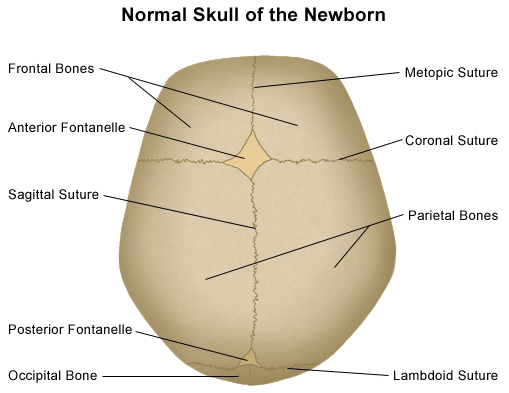fontanelle

A fontanelle is a space between the bony plates of an infant's skull, often called a "soft spot", due to an incomplete ossification of the cranial bones.
There are two fontanelles in a baby's skull. The anterior fontanelle, situated in the center front, is diamond-shaped and about 2.5 centimeters (1 inch) across. The posterior fontanelle, situated towards the rear, is triangular and only about 6 mm across.
These spaces gradually close over as the infant's skull plates grow toward each other. The posterior fontanelle closes within about two months of birth, the anterior fontanelle within about 18 months. The seams between the bones do not completely fuse, however, until old age.
Disorders of the fontanelles
It is normal for the fontanelles to become tense and bulge out when a baby cries. Persistent tension at other times, however, may indicate an abnormality, particularly hydrocephalus (the accumulation of fluid in the skull). A sunken fontanelle may be a symptom of dehydration. If a fontanelle is abnormally large or takes a long time to close, the cause may be a brain abnormality or a disorder such as rickets, affecting the skull bones. Early closure of the fontanelles results in a deformity known as craniosynostosis.
Occasionally, a third fontanelle is present between the other two; this is a feature of Down's syndrome. Sometimes a baby may have extra bones in the anterior fontanelle, but this is not abnormal. These extra bones fuse into the skull when the gap between them closes.


